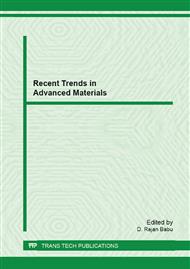p.329
p.334
p.341
p.345
p.350
p.357
p.361
p.366
p.371
Strength and Elasticity of Mortar with Municipal Solid Waste Incineration Ash
Abstract:
Energetic and metallurgic wastes are widely used as Supplementary Cementitious Materials (SCM) and aggregates in order to reduce the concrete price and/or enhance its durability and mechanical properties. Ashes generated in process of Municipal Solid Waste Incineration (MSWI) feature certain similarity with conventional SCMs and thus there is a potential to utilize MSWI ashes as concrete admixtures. Unfortunately high variety of MSWI ashes is observed as consequence of differences in incinerated waste composition and also variability of applied combustion and air pollution control technology. Therefore it is necessary to evaluate the applicability of MSWI ashes individually. The present paper deals with influence of MSWI bottom ash from a Czech incineration facility on strength and Young’s modulus of cementitious mortars where the MSWI bottom ash was used as aggregates. Even though the content of ash was as high as 40 % of aggregates dosage the influence on mechanical properties was found to be not very significant. The strength was not lost by MSWI admixing, the Young’s modulus decreased somewhat.
Info:
Periodical:
Pages:
350-354
Citation:
Online since:
October 2012
Authors:
Price:
Сopyright:
© 2012 Trans Tech Publications Ltd. All Rights Reserved
Share:
Citation:


